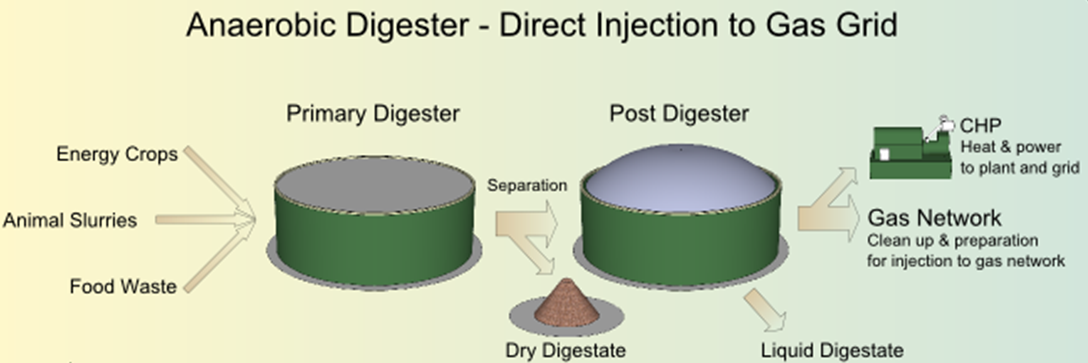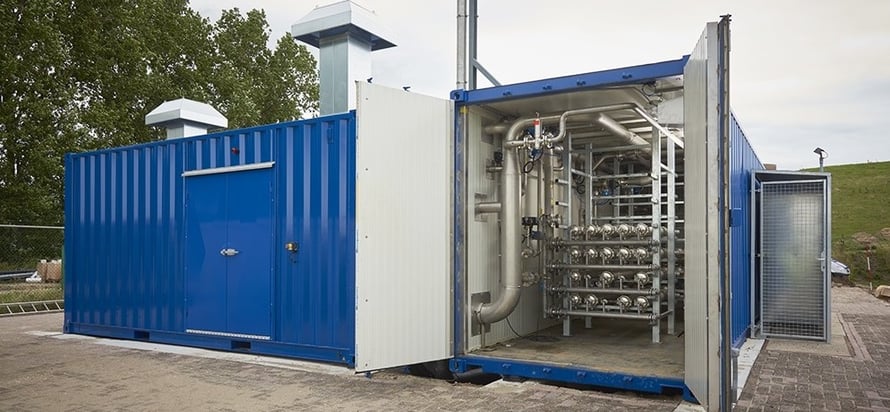Biomethane: GreenTech Grass as Feedstock for Renewable Green Methane
GreenTech Fuels is leading the way in renewable energy with the production of biomethane, a clean alternative to natural gas. GreenTech Grass, a high-yield, fast-growing species, serves as an ideal feedstock for biomethane production. Its high biomass output and minimal resource needs make it an efficient and sustainable choice for generating renewable energy.
The process involves anaerobic digestion, where microorganisms break down the grass to produce biogas, which is then purified into green methane. This renewable fuel can replace natural gas in various applications, reducing carbon emissions and promoting energy security.
By scaling up biomethane production from GreenTech Grass, GreenTech Fuels contributes to a cleaner, more sustainable energy future, supporting global efforts to reduce fossil fuel dependency and mitigate climate change.
Biomethane Production from GreenTech Grass
GreenTech Fuels leverages proven and commercial anaerobic digestion technology, as detailed in the section on Green Electricity, to produce biomethane from GreenTech Grass. Biomethane is the sustainable equivalent of methane, the main component of natural gas, used widely for heating, cooking, electricity generation, and vehicle fuel.


Biogas, a byproduct of anaerobic digestion, consists primarily of methane (60%) and carbon dioxide. It can be upgraded to pipeline-quality methane and injected into existing natural gas pipelines, providing an efficient method for transmission. The byproduct, organic fertilizer, can be sold separately or returned to GreenTech Grass fields, and heat is another beneficial byproduct.
Upgrading biogas to pure methane, required for pipeline injection, can add costs but is commercially feasible. In the US, substantial subsidies and premium prices for biomethane used as transportation fuel incentivize its adoption. GreenTech Fuels is committed to advancing renewable energy solutions, reducing fossil fuel dependence, and supporting a sustainable energy future.


Membrane Technology for Upgrading Biogas to Biomethane
Biogas produced from anaerobic digestion consists primarily of methane and carbon dioxide, with small amounts of other contaminants. For power generation, only hydrogen sulfide needs to be removed. However, to meet pipeline-quality standards, biogas must contain 88-98% methane, compared to the 60% methane content in raw biogas.
One of the most efficient commercial options for upgrading biogas to biomethane is membrane technology. This method separates methane from carbon dioxide and other impurities, allowing the gas to meet the purity requirements for injection into natural gas pipelines. Membrane technology offers a cost-effective and scalable solution to produce renewable green methane, contributing to a more sustainable energy future.


Biogas Upgrading System
Upgrading biogas produced from anaerobic digestion is a commercial solution for applications that require renewable, low-carbon methane. This process enhances biogas by increasing the methane content from 60% to 88-98%, making it suitable for various uses, including power generation and injection into natural gas pipelines. The upgraded biogas, often referred to as biomethane, provides a sustainable alternative to fossil-based natural gas, supporting the transition to a greener, more sustainable energy system.
HOME
ABOUT US
PRODUCTS
PROJECTS
TECHNOLOGY
SOLUTIONS
MEDIA CENTRE
CONTACT US
© 2024. All rights reserved.
PRODUCTS
BIOWATT COMPACT BIOMASS GASIFICATION POWER GENERATION SYSTEM
BIOMASS GASIFICATION POWER PLANT
BIOMASS GASIFIER
BIOMASS CARBONIZER
BIOMASS GASIFIER FOR GREEN-CHEMICAL
BIOMASS GASIFICATION BOILER
BIOMASS CARBONIZATION POWER PLANT
BIOMASS CARBONIZATION BOILER
COAL GASIFICATION POWER PLANT
COAL GASIFIER
WASTE GASIFIER
WASTE GASIFICATION POWER PLANT
SYNGAS GENERATOR SET
PRODUCER GAS GENERATOR SET
BIOMASS GAS GENERATOR SET
COAL GAS GENERATOR SET
GAS PURIFICATION SYSTEM
DECORBONIZATION
GREENTECH SOLAR
NANO HYDROPOWER
GREENTECH BATTERIES
HUSKTECH
CONTACT US
GREENTECH FUELS
GREENTECH HABITAT CENTER
CHOUPARAN, HAZARIBAGH, JHARKHAND, INDIA - 825406
📞 +91 6207423061
📞 +91 9973352599
www.greentechfuels.in
📧 info@greentechfuels.in


